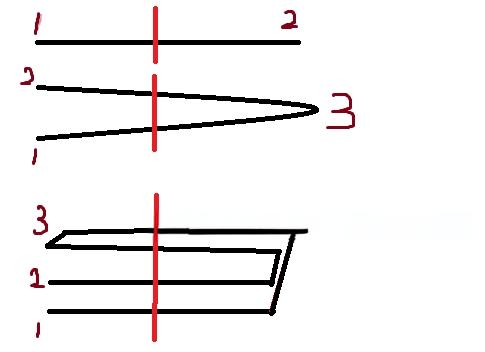前文:swift微调Qwen-7B大模型-CSDN博客
我详细介绍了swift如何进行微调,但数据集均来自魔搭社区,如何想训练自定义数据集,实际上也很简单。
一、自定义数据集微调
export MKL_THREADING_LAYER=GNU \
CUDA_VISIBLE_DEVICES=0,1,2,3 \
NPROC_PER_NODE=4 \
swift sft --model_type qwen2-7b-instruct \--model_id_or_path /root/.cache/modelscope/hub/qwen/Qwen2-7B-Instruct \--sft_type lora \--dtype AUTO \--dataset AI-ModelScope/alpaca-gpt4-data-zh#200 \--self_cognition_sample 3000 \--model_name 阿盛 Master Coder \--model_author 盛世芳华 LLM_ROME \--num_train_epochs 1 \--lora_rank 8 \--lora_alpha 32 \--lora_dropout_p 0.05 \--lora_target_modules ALL \--gradient_checkpointing true \--batch_size 1 \--weight_decay 0.1 \--learning_rate 1e-4 \--gradient_accumulation_steps 16 \--output_dir output微调时,只需指定--dataset为本地csv文件路径即可,csv文件的格式如下:

instruction是问题,input大概能理解为问题背景,output为答案,数据集准备好以后就可以直接进行训练。
参考:ms-swift/docs/source/LLM/自定义与拓展.md at main · modelscope/ms-swift (github.com)
前文在训练时很慢,原因是就用了一张卡,多卡训练时一定要记着加上:
export MKL_THREADING_LAYER=GNU \
CUDA_VISIBLE_DEVICES=0,1,2,3 \
NPROC_PER_NODE=4二、推理
CUDA_VISIBLE_DEVICES=0,1,2,3 swift infer --ckpt_dir output/qwen2-7b-instruct/v2-20240826-101129/checkpoint-48常识用CLI推理,问问它:“贝贝是谁”,可以正确回答出我的答案,说明微调生效。
三、合并Lora
CUDA_VISIBLE_DEVICES=0,1,2,3 swift export --ckpt_dir output/qwen2-7b-instruct/v2-20240826-101129/checkpoint-48 --merge_lora true执行后,生成./output/qwen2-7b-instruct/v2-20240826-101129/checkpoint-48-merged目录
包含了模型文件。
四、安装ollama
玩大模型的朋友都认识ollama,它的好处不言而喻,想要把合并后的模型跑在ollama中,就需要将模型转换为ollama需要的模型格式。
curl -fsSL https://ollama.com/install.sh | sh安装成功后,启动ollama服务
ollama serve五、下载ollama、llm源码
之所以需要下载ollama的源码,是因为需要源码编译来进行模型的转换。
git clone https://github.com/ollama/ollama.git
cd ollama
git submodule init
git submodule update llm/llama.cpp5.1安装环境依赖
python -m venv llm/llama.cpp/.venv
source llm/llama.cpp/.venv/bin/activate
pip install -r llm/llama.cpp/requirements.txt5.2构建量化工具
cd llm/llama.cpp/
make
可参考:llama.cpp/docs/build.md at 1e6f6554aa11fa10160a5fda689e736c3c34169f · ggerganov/llama.cpp (github.com)
编译成功后,会在目录下看到很多工具:

如果编译时报错,请先安装:
apt install cmake
apt install ccache六、模型转化
用convert-hf-to-gguf.py 转换模型:
python ../ollama/llm/llama.cpp/convert_hf_to_gguf.py output/qwen2-7b-instruct/v2-20240826-101129/checkpoint-48-merged --outtype f16 --outfile converted.bin其中output/qwen2-7b-instruct/v2-20240826-101129/checkpoint-48-merged就是lora合并后的文件夹路径,--outtype f16是不损失精度,--outfile converted.bin是转换后的文件名。
结束后,得到了converted.bin文件,大小14.2G
七、模型量化
一个7b的模型,12.4G还是有点大,使用模型量化工具进行量化,这里我使用4比特量化。
../ollama/llm/llama.cpp/llama-quantize converted.bin quantized.bin q4_0最终得到quantized.bin,文件大小4.1G。
八、构建ollama包
ollama包可以理解为Dockfile,创建Modelfile文件,文件内容:
FROM quantized.bin# set the temperature to 0.7 [higher is more creative, lower is more coherent]
PARAMETER temperature 0.7
PARAMETER top_p 0.8
PARAMETER repeat_penalty 1.05
TEMPLATE """{{ if .System }}<|im_start|>system
{{ .System }}<|im_end|>
{{ end }}{{ if .Prompt }}<|im_start|>user
{{ .Prompt }}<|im_end|>
{{ end }}<|im_start|>assistant
{{ .Response }}<|im_end|>"""
# set the system message
SYSTEM """
You are a helpful assistant.
"""
最关键的就是第一句:FROM quantized.bin(文件名一定要和你量化后的文件名对的上)
九、构建部署包
ollama create test2 -f Modelfile
然后ollama看一下当前有哪些模型:
ollama list
test1是之前我创建的未经量化的模型,test2是量化后的。
十、运行模型
ollama run test2
速度很快,一切正常。
参考:
Ollama 构建自定义模型包 - 简书 (jianshu.com)
ollama 使用自定义大模型_ollama 自定义模型-CSDN博客
什么是Base模型?什么是chat模型?什么是instruct?什么是4Bit?_instruct模型和base模型的区别-CSDN博客 将 HuggingFace 模型转换为 GGUF 及使用 ollama 运行 —— 以 Qwen2-0.5B 为例_qwen2 gguf-CSDN博客
Ollama运行qwen2:7b 输出乱码_ollama run qwen2:7b-CSDN博客
ollama运行qwen2:7b一直输出大写字母G ·问题 #485 ·QwenLM/Qwen2 (github.com)
Ollama创建微调模型_ollama微调模型-CSDN博客
Ollama 导入模型指南 (zhihu.com)
基于SWIFT微调专属于自己的大模型 - 知乎 (zhihu.com)



















